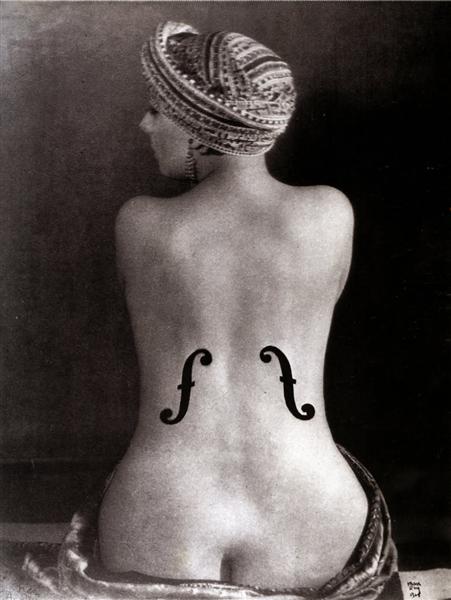Hi, everybody!
Today we are going to find out some of the most famous photographers of the XX century.
Let’s get started: I am going to introduce you to Man Ray.
Man Ray’s career is distinctive above all for the success he achieved in both the United States and Europe. He was influenced by American modernism in the 1910s, then he moved to Paris in the 1920s and 1930s, and in the 1940s he crossed the Atlantic once again, spending periods in New York and Hollywood. His art spanned painting, sculpture, film, prints and poetry, and in his long career he worked in styles influenced by Cubism, Futurism, Dada and Surrealism. He also successfully navigated the worlds of commercial and fine art, and came to be a sought-after fashion photographer. He is perhaps most remembered for his photographs of the inter-war years, in particular the camera-less pictures he called ‘Rayographs’, but he always regarded himself first and foremost as a painter (from http://www.theartstory.org/artist-ray-man.htm)
What do you mean by ‘rayographs’?
Photograms, or rayographs, are made by placing objects directly on light-sensitive paper, which Man Ray exposed to light and developed.
For a selection of rayographs, see
Key Ideas
Although he matured as an abstract painter, Man Ray disregarded the traditional superiority painting held over photography and happily moved between different forms. Dada and Surrealism were important in encouraging this attitude.
For Man Ray, photography often operated in the gap between art and life. It was a means of documenting sculptures that never had an independent life outside the photograph, and it was a means of capturing the activities of his avant-garde friends. His work as a commercial photographer encouraged him to create fine, carefully composed prints.
Le Violon d’Ingres, 1924

A NAKED woman sits with her pear-shaped back facing us. Her head, wrapped in a turban, is turned to the left. The viewer’s attention is drawn not to her pert profile or shapely body but to the two black f marks (familiar from stringed instruments) on either side of her spine. The photograph is titled “Le violon d’Ingres”—a French expression that means “hobby”. Jean-Auguste-Dominique Ingres, a master painter from the 19th century, was an accomplished violinist. He was also much admired by Man Ray, an American photographer, who created this tribute in 1924. The result is an archetypal Surrealist image: arresting, dreamlike, sexually charged, amusing and upsetting. The visual pun first evokes a smile, and then the thought that the model, Kiki de Montparnasse, Ray’s lover, is being presented as a passive instrument or plaything.
(https://www.economist.com/blogs/prospero/2013/03/man-rays-portraits)
Man Ray transformed the female body into a musical instrument by painting sound-holes on her back, playing with the idea of objectification of an animate body. Throughout his career Man Ray was fascinated with juxtaposing an object with a female body.
What is Surrealism?
A 20th-century avant-garde movement in art and literature which sought to release the creative potential of the unconscious mind, for example by the irrational juxtaposition of images.
Launched in 1924 by a manifesto of André Breton, the movement grew out of symbolism and Dada and was strongly influenced by Sigmund Freud. In the visual arts its most notable exponents were André Masson, Jean Arp, Joan Miró, René Magritte, Salvador Dalí, Max Ernst, Man Ray, and Luis Buñuel
Surrealism aimed to revolutionise human experience, rejecting a rational vision of life in favour of one that asserted the value of the unconscious and dreams.
Writers, artists, photographers and filmmakers from around the world shared this rejection of conventional artistic and moral values, and surrealism quickly became an international movement. It exerted enormous impact on the cultural life of many countries in the interwar years and later.
I am quite sure you’ll find this video clear and explanatory. It also makes references to Man Ray, Robert Capa and Surrealism.
We are going to discuss it together during our next class. See you!
https://www.mindomo.com/mindmap/62774d3e118b4c38ac37d6c7987470c7
